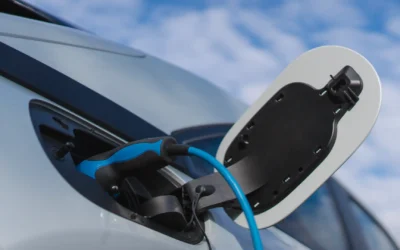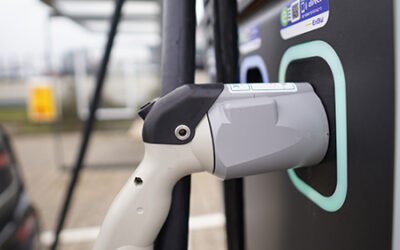• The commercial success of the electric vehicle will require the development of a charging infrastructure that is accessible, easy to use, and relatively inexpensive
• Looking at key performance indicators, which have a direct impact on a charging station’s downtime, can assist in explaining why a given degree of uptime exists and provide valuable insight into the charging experience’s reliability.
• The findings from a recent non-systematic survey of EV owners, by the California Air Resources Board, reveal that 34% of the respondents reported that charging station operability issues were a barrier to using public charging stations.
The contemporary electrical grid provides safe and reliable energy to homes and companies all around the world, thanks to a well-established infrastructure for power distribution. However, as more people switch to electric cars (EVs), the electrical grid must provide more power to charge them. EV chargers, which consist of an electronic control box, vehicle coupler connector, cable, and wall socket, are located at the intersection of the EV and the grid, effectively linking the new and old worlds.
The commercial success of the electric vehicle will require the development of a charging infrastructure that is accessible, easy to use, and relatively inexpensive. Not only must the equipment be durable and dependable, but it must also be designed to protect against any potential hazards that may arise when interacting with an electrical infrastructure that was not constructed with electric vehicles in mind.
A highly reliable and easy to use charging infrastructure is crucial to developing confidence when consumers migrate from familiar gas vehicles to unfamiliar electric vehicles in order to achieve a speedy transition to electric vehicle driving (EV). To provide direction for the effective buildout of the EV charging infrastructure, an accurate assessment of the dependability, functionality, and uptime of existing public EV chargers is required.
Measuring Reliability
There are several ways to assess an electrical system’s reliability; the most essential measure, however, is the degree to which the system’s performance results in the delivery of the required amount of electricity to the customer.
In the EV charging industry, reliability is often measured in terms of uptime, which is defined as the percentage of time over a calendar year that charging services are available or in-use. Therefore, a 99% uptime would imply 361 days of charging service availability over a calendar year, whereas a 95% uptime would imply 347 days over a calendar year. While the difference between 99% and 95% is only 4 percentage points, it can add up to 14 days (or 350 hours) of downtime for an EV driver.
From the standpoint of the EV driver, a dependable EVSE is one that charges the EV at the expected power for the expected period after using the appropriate payment method. However, for the station owner or network operator, the issue is more complex. There are different reasons why a charger may not work. For example, there may be an issue upstream with the electrical feed or a problem with the station hardware or communication network. Some of the causes of these failures may be outside the control of the network operator (like upstream power failures, vandalism, accidents, restricted access to a site and so on), whereas others may be within its control (like equipment or network failures).
To this point, private companies have been buying and installing chargers — with the benefit of considerable public funding — without bearing any responsibility for monitoring or reporting on charging units’ uptime and downtime once they’re in operation.
Even if the problem is outside the network operator’s control, the network operator can still be held responsible for a service interruption. To assess the responsiveness of a network operator, one could consider the following:
i. The time it took for the network operator to detect the service-affecting issue,
ii. The time it took for the network operator to escalate the service-affecting issue to the party responsible,
iii. The time it took for the party responsible to repair/resolve the service-affecting issue and restore service (known as mean time to repair or “MTTR”), and
iv. The time it took for the network operator to restore service.
Looking at these types of key performance indicators, which have a direct impact on a charging station’s downtime, can assist in explaining why a given degree of uptime exists and provide valuable insight into the charging experience’s reliability.
The performance of the charging equipment in the field has an impact on uptime as well. When evaluating the charging equipment’s performance, it’s possible to look at the Mean Time Between Failures (also known as “MTBF”). Because equipment design influences susceptibility to failure, the mean time between failure should be assessed using the specific equipment model and version. This method is useful for assessing equipment reliability because it considers the equipment’s real performance over time. When all other factors are equal, a high MTBF should result in increased uptime.
The Current State of EV Charging Infrastructure
The EVSE ecosystem consists of different stakeholders. When an EVSE is installed, for instance, it is connected to the local utility electrical infrastructure, which supplies electricity to the EVSE. The EVSE is installed by a certified installer, controlled by a charge point operator (CPO), and located at a site owned and managed by a site host. The EVSE is linked to a payment system and an internet service provider (ISP) network.
The overall responsibility for keeping the EVSE functioning can either be with the local electric utility, the installer, the site host, the CPO, or the servicing company. These stakeholders may be autonomous or collaborative.
A significant portion of public charging infrastructure either does not function properly or is unavailable. It is hard to find definitive data on public electric vehicle charger maintenance, or how today’s chargers are performing in the wild. Companies that build chargers tend to say they have a 95 to 98% nationwide “uptime”, an industry term meaning the tech is charging or ready to charge. But owners of electric vehicles often complain about slow or broken chargers.
The findings from a recent non-systematic survey of EV owners, by the California Air Resources Board, reveal that 34% of the respondents reported that charging station operability issues were a barrier to using public charging stations. In a survey comprising of 5,500 EV owners, 25% of those who use public DCFCs reported a major difficulty with chargers being nonfunctional or broken.
System electrical failures are one of the most common problems incurred whilst trying to charge electric vehicles. The chargers facing system failures display a blank screen, are non-responsive, or display a text on screen of “charger unavailable” or “connection error”. Other common causes of non-functional EVSEs include a payment system failure, a charge initiation failure, a connection failure, or a broken connector.
A charge initiation failure usually occurs if the charging does not start after the payment is accepted or if the vehicle starts to charge but is interrupted before the completion of the charging session. Payment system failures are a common cause of charging failures as well. Public chargers usually provide multiple options for payment including the insertion or swiping of cards, paying through mobile apps, or using a membership card to pay for the charging session. If none of the payment methods lead to successful initiation of charging, the EVSE is deemed non-functional.
Market analysis suggests that the currently installed EV charging infrastructure does not align with the required minimum uptime of 95% -97%, as claimed by network operators.
Establishing Best Practices
In terms of policy, requiring enterprises to collect and disclose their own uptime data instead of governments having an active part in oversight does not ensure continuous service or consumer satisfaction. The government should set uptime minimums for organizations receiving government assistance as the first step toward closing this disparity. This would make it easier for network and station operators to prioritize uptime and their responsibilities for it.
Stakeholders should look at it from the standpoint of an electric vehicle driver to come up with these best practices. Increasing reporting transparency requires an equitable distribution of responsibility among the federal and provincial governments, private companies, and utilities, and it boils down to three principles: prioritize drivers, improve infrastructure and data accessibility, and stay informed about government trends.
The EV charging infrastructure would greatly benefit from more data transparency and transparency on methodologies used by each electric vehicle service provider (EVSP) in calculating uptime. For example, EVSPs could share data on the different subcomponent failure rates and whether the failure was localized, i.e., only affecting one EVSE due to a component failure, or systemic, i.e., affecting multiple EVSEs due to a communication or software problem. Such a reporting mechanism would benefit the entire industry by establishing an ongoing mechanism to identify the weak links in the ecosystem and developing a coordinated approach to addressing them
To improve the accuracy of reliability reporting, a third-party field audit of an EV charging station could be performed at the startup of the charging station and at periodic intervals thereafter. An audit of each EVSE should involve a standard methodology which could include an assessment of the allotted parking space, a measurement of the cable length, a test of payment methods and screen function, and a confirmation that power is delivered to the EV for a minimum period of time at the intended power level.
To improve EV driver expectations and experience, accurate, real-time data on EVSE status should be made public. As mentioned before, the definition of reliability can be viewed from the perspective of the EV owner or the EVSE owner, and they are not necessarily the same. Acknowledging this difference, as the technology and regulatory framework matures and is better defined, is important to establish the correct expectations and prevent EV owners from giving up their EVs and returning to gas vehicles
Real-time data would allow EV owners to better understand the actual reliability of the EV infrastructure and adjust their expectations accordingly.
Looking Ahead
Moving forward we can expect more and more economies to be making strides in electrifying their road transport. In this regard, to make real progress, targets and fundings are absolutely crucial. With the recent region-wise and country-wise announcement of dates for the banning of ICE vehicles and the provision of investments into deploy charging infrastructure, we can expect a greener future in the coming decades.
Contact Sales:
More about our:
EV Charging Infrastructure Market Research
Recent Insights
Sustainability Across Sectors: Highlights from GreenTech Festival 2024
Recently, I had the privilege to attend and present at the Greentech Festival, an excellent event in the realm of sustainability. This influential...
An Evolving Market: Rise of Electric Vehicles in Europe (2023)
This infographic examines the electric vehicle (EV) market in the European region. It highlights the current and forecasted EV market size of each...
Evolution of V2G: CPOs-Automotive OEMs-Utilities at the center of transition
Evolution of V2G: CPOs-Automotive OEMs-Utilities at the center of transition [ba_advanced_divider active_element="text" title="About the Whitepaper"...


